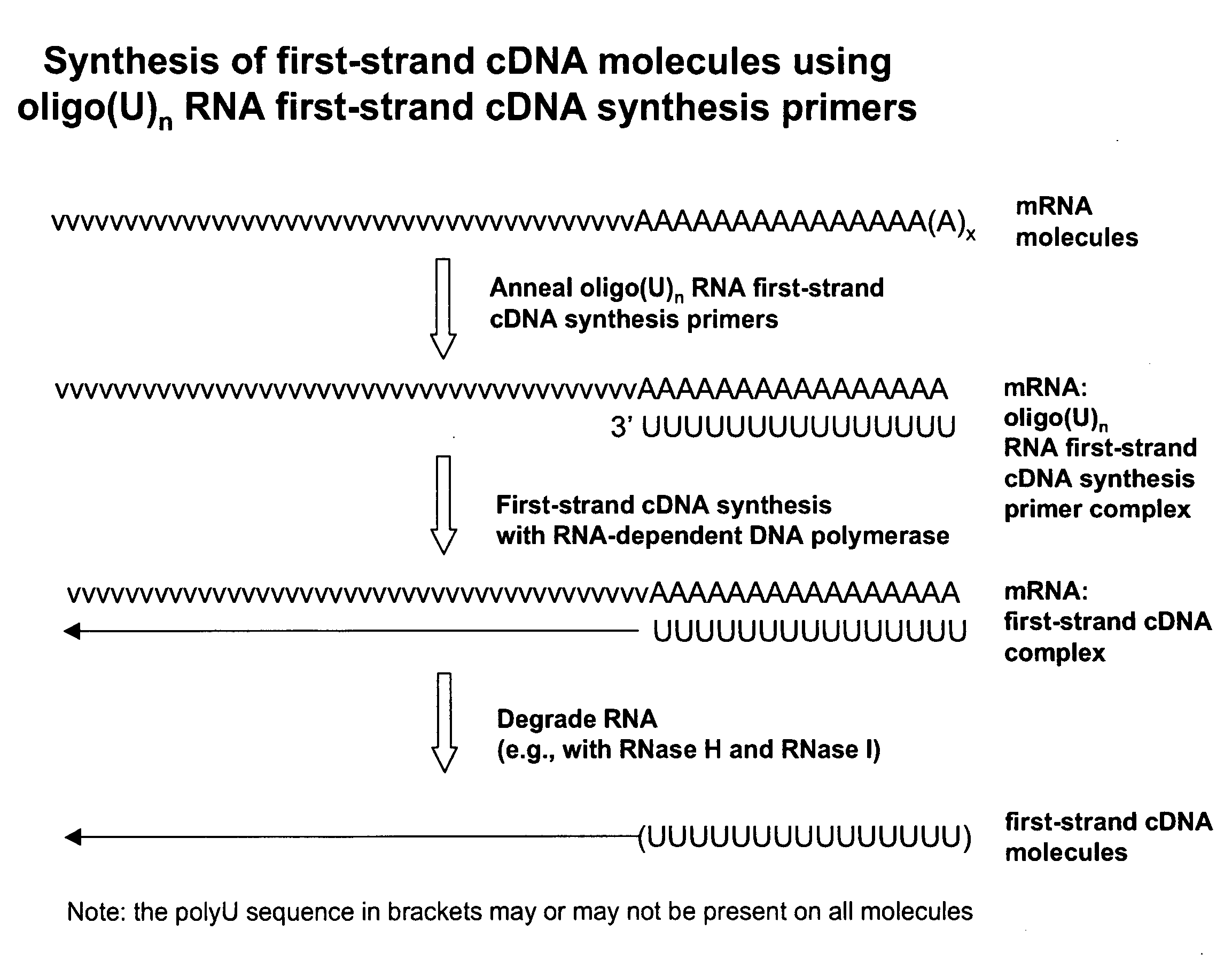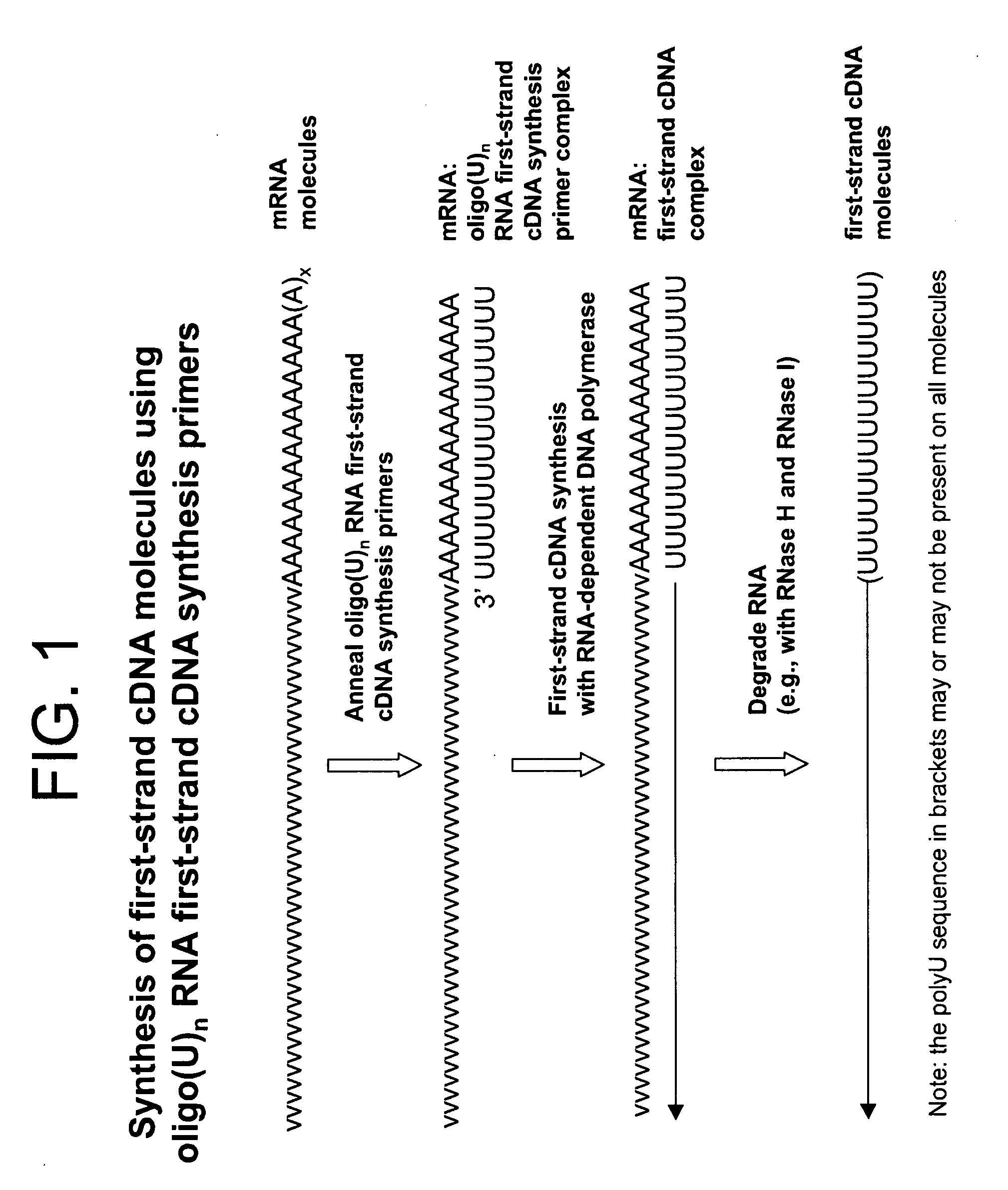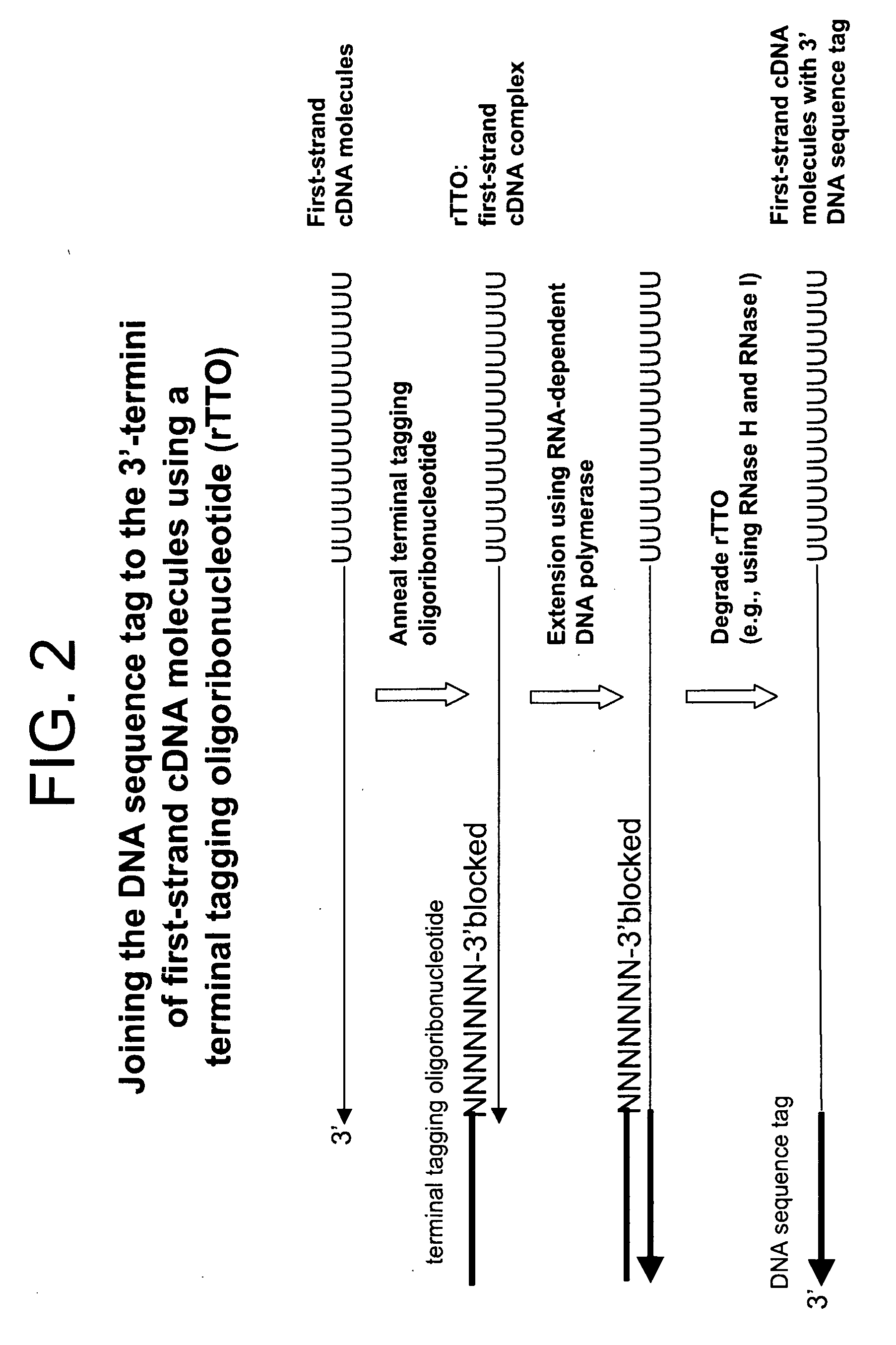Copy DNA and sense RNA
- Summary
- Abstract
- Description
- Claims
- Application Information
AI Technical Summary
Benefits of technology
Problems solved by technology
Method used
Image
Examples
example 1
Amplified Sense RNA Molecules Produced Using a First-Strand cDNA Synthesis Primer (oligo(dT20V)) and a Terminal Tagging Oligonucleotide Consisting of Deoxyribonucleotides (dTTO), without Purification Steps Prior to In Vitro Transcription (IVT)
[0408]Total RNA (100 ng) from HeLa cells (Clontech) was used as template to synthesize first-strand cDNA molecules in a standard first-strand cDNA synthesis reaction containing 50 pmoles of first-strand cDNA synthesis primer (Seq. ID. No. 1): (dT20V), 5 mM Tris-HCl (pH 8.3), 10 mM MgCl2, 75 mM KCl, 5 mM DTT, 1 mM dATP, 1 mM dGTP, 1 mM dCTP, 1 mM TTP and 25 units MMLV reverse transcriptase (EPICENTRE Biotechnologies) in a final volume of 5 μL. Corresponding reactions, but with no total RNA template (no template controls), were also included. The reactions were incubated at 37° C. for 60 minutes for first-strand cDNA synthesis. The RNA templates were then removed by enzymatic digestion with RNase H and RNase I simultaneously at 30° C. for 15 min....
example 2
Amplified Sense RNA Molecules Synthesized after 2-Rounds Using a First-Strand cDNA Synthesis Primers (dT) and Terminal Tagging Oligonucleotide Consisting of Deoxyribonucleotides (dTTO) and Mini-Column Purification Steps Prior to Synthesis of Sense RNA Molecules in the First Round of In Vitro Transcription
[0424]An aliquot (20%) of the first-round IVT-amplified sense RNA molecules synthesized using each template and no-template control, corresponding to reactions #1 and #2, respectively, of Example 1, were used for 2-round IVT-amplification. Since the samples that were not purified in Example 1 contained predominantly non-specific products, they were not used for 2-round IVT-amplification. Each first-round-amplified RNA sample chosen for second-round amplification was used to synthesize first-strand cDNA molecules in a standard first-strand cDNA synthesis reaction containing 50 pmoles oligo(dT20)V first-strand cDNA synthesis primer (Seq. ID. No. 1; (dT20)V), 5 mM Tris-HCl (pH 8.3), 10...
example 3
Amplified Sense RNA Molecules Synthesized after 2-Rounds Using a First-Strand cDNA Synthesis Primer (dT20)V) Consisting of Deoxyribonucleotides and an Terminal Tagging Oligoribonucleotide Consisting of Ribonucleotides (rTTO) and Either 1 or 2 Mini-Column Purification Steps Prior to Synthesis of Sense RNA Molecules in the First Round of In Vitro Transcription
[0432]Four first-strand cDNA synthesis reactions (2× template and 2× no-template) were performed as described in Example 1 with the exception that 5 ng of HeLa total RNA template was used in the appropriate reactions. The terminal tagging reactions were also performed as in Example 1 but with the following exceptions: (1) a terminal tagging oligoribonucleotide comprising ribonucleotides (rTTO; Seq. ID. No. 4):
[0433]GACGAAGACAGUAGACAN6(N (2′-O-methyl)) (3′-O-propyl-phosphate) (SEQ ID NO:xxxx) was used instead of the terminal tagging oligonucleotide comprising deoxyribonucleotides (dTTO) and (2), one set of template and no-template...
PUM
| Property | Measurement | Unit |
|---|---|---|
| Thermal stability | aaaaa | aaaaa |
Abstract
Description
Claims
Application Information
 Login to View More
Login to View More - R&D
- Intellectual Property
- Life Sciences
- Materials
- Tech Scout
- Unparalleled Data Quality
- Higher Quality Content
- 60% Fewer Hallucinations
Browse by: Latest US Patents, China's latest patents, Technical Efficacy Thesaurus, Application Domain, Technology Topic, Popular Technical Reports.
© 2025 PatSnap. All rights reserved.Legal|Privacy policy|Modern Slavery Act Transparency Statement|Sitemap|About US| Contact US: help@patsnap.com



